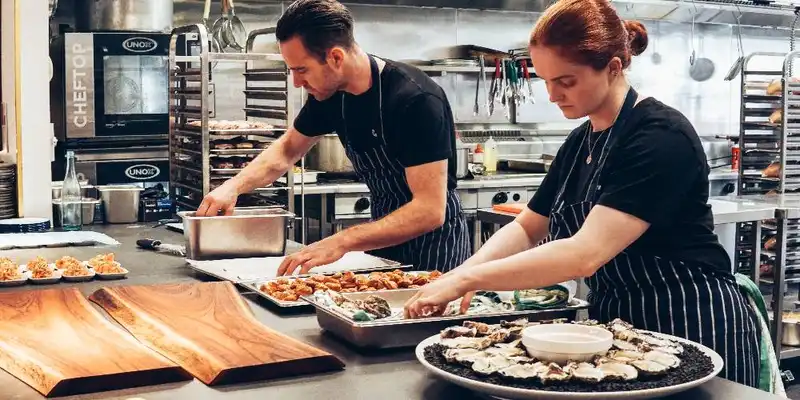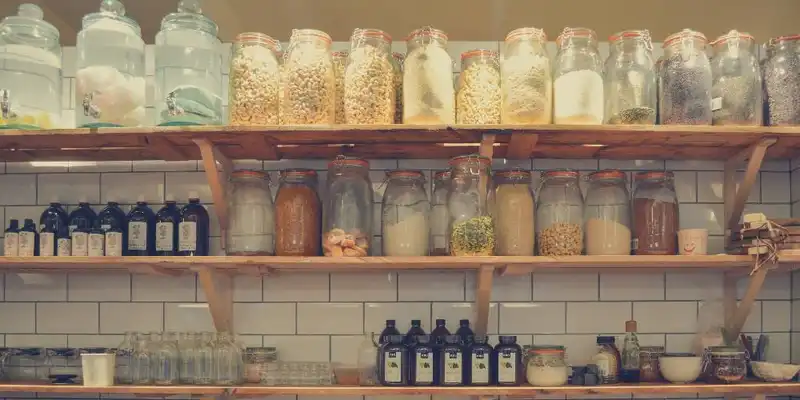5 Restaurant Inventory Management Tips for Maximum Efficiency
In the food and beverage industry, wastage is a serious problem that can have devastating effects on businesses. With some eateries reporting up to 10% of their food inventory being wasted before even reaching the plate, implementing foolproof restaurant inventory management is crucial to combating this form of profit loss.
Restaurant inventory management essentially sums up the tracking, organizing, and ordering of all products within the restaurant to avoid spoilage - especially with perishable items. It factors in the varying storage needs of each ingredient, tracks expiration dates, and allows restaurants to minimize losses, maximize usage, and stay on top of shipments to ensure the wheels are running smoothly.
5 Top Restaurant Inventory Management Techniques

Depending on the restaurants' niche and unique circumstances, inventory management techniques will vary. However, there are 5 general techniques management should keep in mind to optimize their inventory procedures and lower avoidable expenses.
1. Stock Monitoring
Ordering new inventory when a restaurant hasn't organized and consolidated its existing goods can be a recipe for disaster within the food industry. Clear inventory management procedures that meticulously track all stock levels and expiration dates can prevent over-ordering and minimize waste.
Through the use of sophisticated inventory management software that can integrate with point of sale systems, businesses can easily and perpetually count all incoming and outgoing stock throughout the day. This will increase visibility in regards to inventory usage and reveal whether the business is under or overstocking certain goods.
While slight variances between physical and recorded stock can be expected within the restaurant industry, it's important to track these figures and limit inconsistencies as much as possible. Generally speaking, an acceptable variance rate is between 2-5%. Anything over this level may be an indication of excessive spoilage or theft.
2. Efficient Use of Raw Material
From keeping a tight rein on perishables to utilizing in-season produce, there are a plethora of inventory tips to assure greater efficiency. For example, when it comes to raw materials it's wise to operate on a minimum stock level, particularly for perishable goods. This can minimize spoilage while reducing inventory-related expenses such as holding and purchasing costs.
It's also a good idea to create a system that ensures the produce is utilized on a first in first out (FIFO) basis. The FIFO method ensures the older stock is used up first and is instrumental in cutting down wastage to maximize profits.
3. Recipe Management and Pricing
Figuring out how much it costs to produce each dish and pricing menu items accordingly is a vital part of optimizing inventory management. In order to limit food costs, businesses should standardize their recipes so management can accurately determine how long the remaining stock will last.
A good tip to remember is to keep the food costs at approximately 30% of the selling price to ensure there is a healthy profit margin.
4. Shelf-Life Management
While rice and canned goods can sit on shelves for years, vegetables, meat, and dairy products need to be constantly monitored and meticulously managed to prevent wastage and food poisoning.
Within any good inventory management plan, the shelf life of each item should be specified with details on how long they can be preserved and in what conditions. In the case of spoilage, businesses can immediately discard the item and turn to an automated inventory replenishment system to reorder the necessary stock.
5. Reporting and Analytics
Regularly analyzing inventory through sales reports and raw material usage is vital to accurate forecasting and budgeting.
Using sales data, businesses can identify inventory trends to help make informed decisions regarding stock replenishment and menu optimization. This information can reveal which items are the most popular and which can be phased out. Additionally, regular stock reporting through inventory management and reordering software can accurately track the list of available supplies to prevent shortages.
Streamlining Processes With Ordering Software

Without optimal inventory ordering, even the best eateries may find themselves suddenly running out of crucial ingredients or faced with a batch of spoiled goods, thus forcing them to take an item off the menu unexpectedly.
Streamlining the ordering process will allow restaurants to operate at its full potential by ensuring the optimal quantities are delivered on time. This further means understanding and implementing the best processes possible when it comes to purchase order forms.
Once a business has determined their optimal ordering quantity and reorder point, they can begin their replenishment process by filling out purchase order forms. These documents are used for placing and receiving supplies from vendors, whether it's food inventory, beverages, or other necessary items such as napkins and utensils.
Businesses may choose to undergo this step manually, in which they will have to regularly track inventory levels and manually place orders when stock is dwindling. However, many modern restaurant businesses have chosen to automate this step with inventory ordering software with built-in purchase order systems.
This software will be able to perpetually track inventory levels and automatically send purchase order forms to key vendors when the system recognizes depleted stock. Streamlining the inventory management and replenishment processes using technology will allow businesses to focus on other vital areas of running a restaurant such as ensuring customer satisfaction by freeing up time spent on maintaining optimal levels of restaurant inventory.





